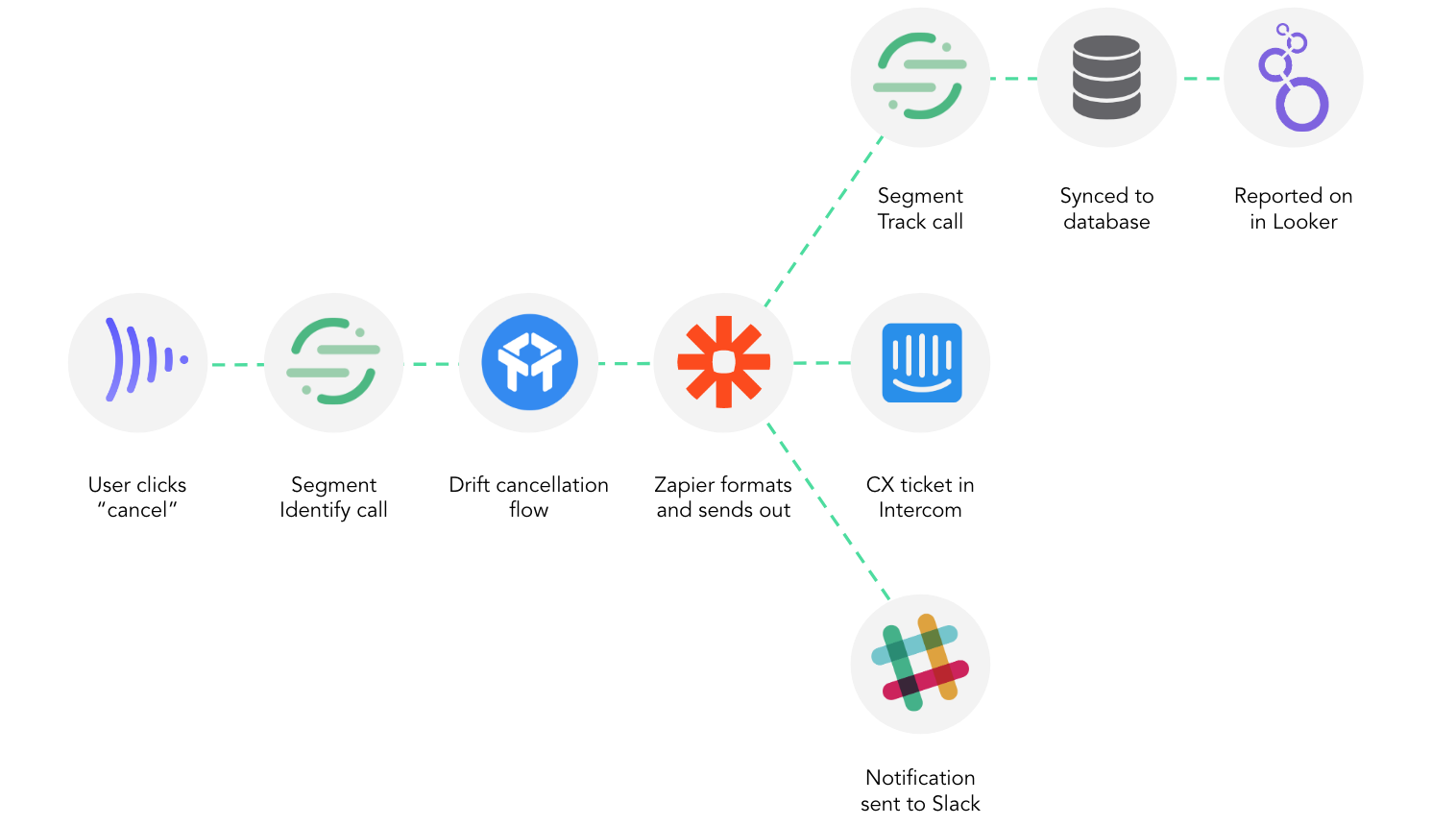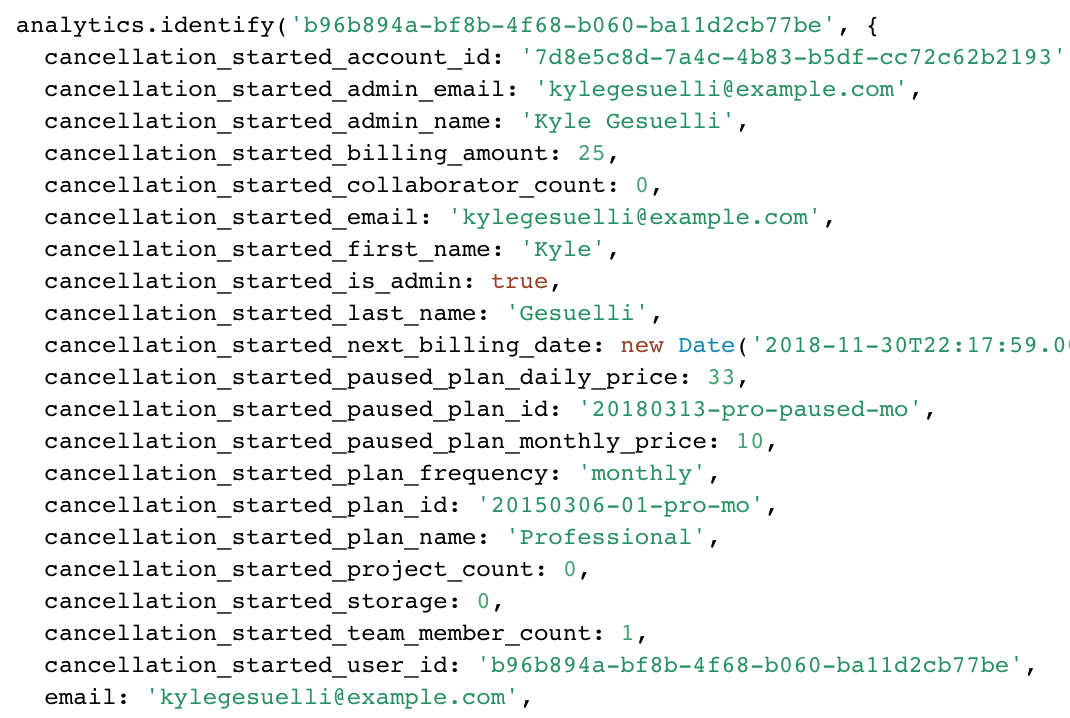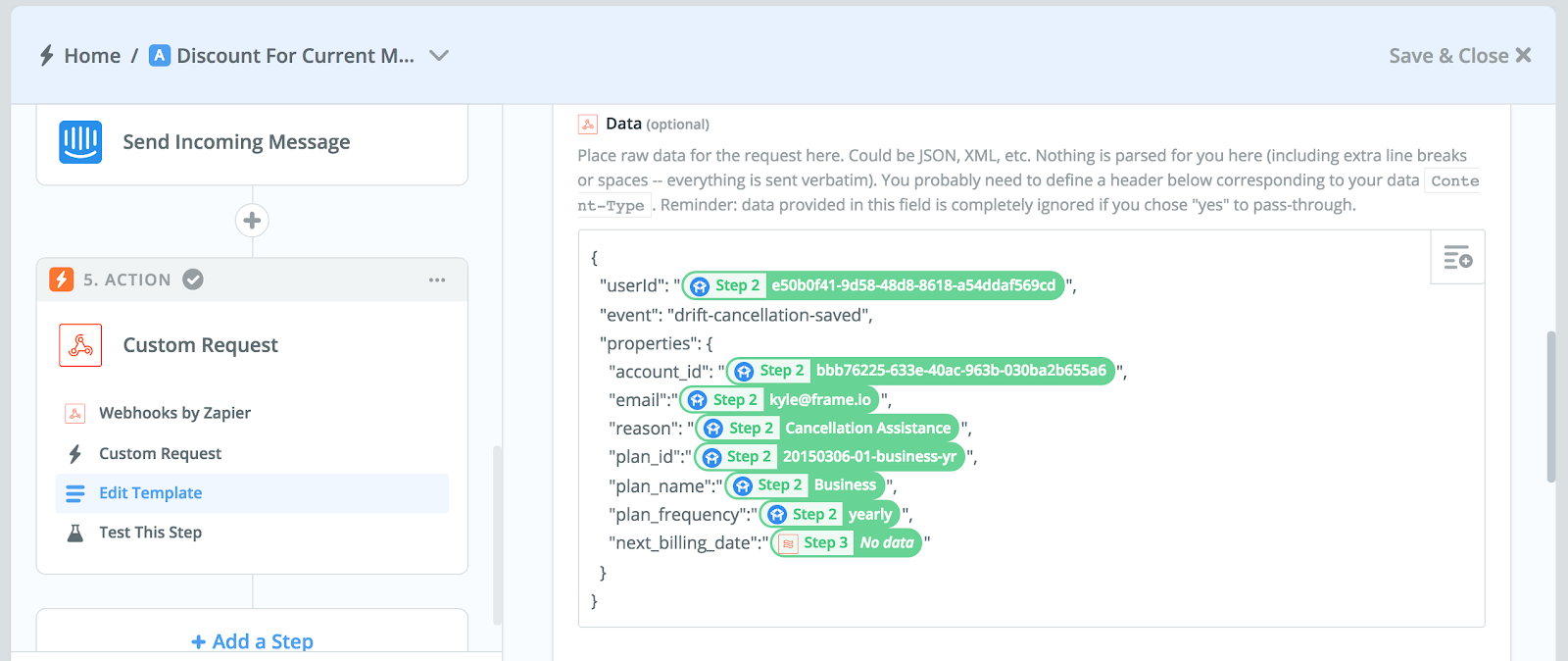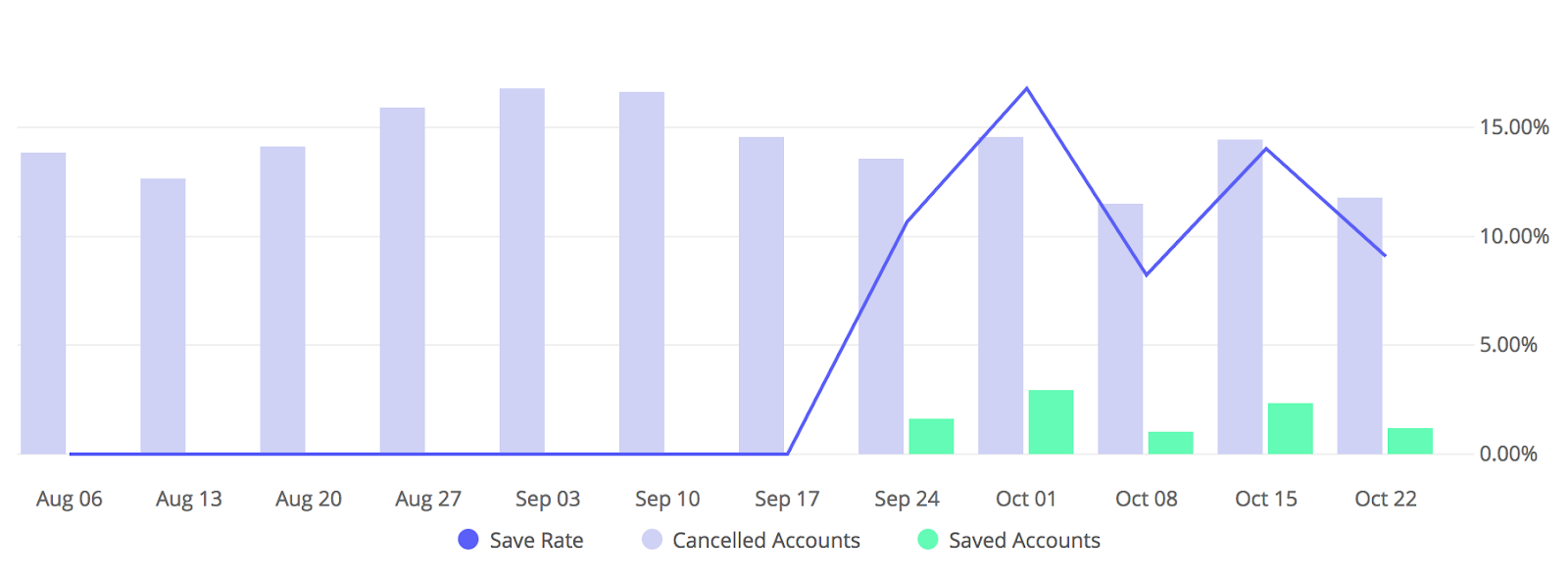
This post is a guest submission by one of our customers at Frame.io for Segment’s Chain Letter blog series. The Chain Letter series profiles clever uses of Segment Connections partner tools that, when chained together, lead to some pretty advanced programmatic models, custom messaging strategies, and more. Thanks to Frame.io for sharing their story!
—Segment
Churn, it’s the secret killer of SaaS. Adding new customers and growing your top line means nothing if it’s all leaking out the bottom of your funnel in just a few short months.
At Frame.io, where I lead growth efforts, churn is always top of mind. For a little context before we jump in, Frame.io makes it really easy to upload large video files to the cloud, securely share those assets, manage multiple versions, gather timestamped feedback, and get approval - all helping our customers deliver video up to 60% faster. Our clients range from video giants like Netflix and Turner on the high end, all the way to wedding videographers and small individual freelancers on the low end. While churn from larger customers like BuzzFeed and Vice who have hundreds of employees working on dozens of concurrent projects isn’t as much an issue for us, the story is very different in the long tail of the market.
For freelance editors and smaller 1-2 person production companies, projects are often inconsistent. Nobody wants to pay for a service they aren’t using, let alone during a period in which new revenue isn’t coming through the door. In fact, 60% of overall churn at Frame.io stems from the client’s project ending.
Fortunately, we see a 50% unbounded reactivation rate from this segment when they pick up their next project. So, the name of the game in combatting this particular type of churn is capturing revenue during that downtime.
Internally, we were averse to “optimizing” our cancellation flow. There are many companies who focus on creating barriers to canceling as a method of mitigating churn. Ever tried to quit the gym and they made you come back later because the manager was out that day? That’s one way to create a cancellation barrier, but this isn’t in our DNA. The real solution for these types of customers was creating a compelling use case for Frame.io between projects. Features in support of that idea could include low-cost archival storage, an embeddable video player, hosting for reels and portfolios, etc.
Like for many startups, bringing any of these ideas to life would be a big build, not an optimization. In fact, there hasn’t been a single time in my 6 years working in growth when I haven’t been strapped for engineering resources. It’s painful, but at the same time, it’s made me creative.
As a growth practitioner, I’ve been astounded over the past few years at how many interesting experiences we can craft with little to no engineering involvement. Using Segment helps us seamlessly collect, store, and transfer data, then chain together a variety of tools to personalize and enhance our customers’ experiences. Traditional email tools can enhance communications with push notifications and direct mail. Zapier connects APIs of disparate tools with a UI simple enough for a marketer. Drift lets you create chatbots, and parse the language of users’ responses to trigger an action. Clearbit helps you identify companies based on IP address. Optimizely lets you personalize your site experience, leveraging connections with Segment and Clearbit. The sky's the limit.

Frame.io’s churn mitigation workflow.
I decided to embark on an experiment to mitigate churn as fast as I could without much involvement from engineering - essentially crafting an experience where we send Drift critical account information via Segment at the time a user clicks to cancel, launch a chatbot via Drift, offer the user who wants to cancel a variety of solutions to prevent cancellation, and finally leverage Zapier to send instructions to the support team to handle the request to amend a subscription or cancel manually.

Sample .identify call from the churn mitigation workflow
Once this experiment proved out whether we could mitigate churn with a chained tool workflow, our plan was to either build a UI to replicate this experience, or keep the chatbot and send webhooks from Zapier to our API to handle the remediation with no human intervention.
Solutions for our customers who were cancelling because their project ended included transferring their account and billing to a colleague or client, pausing a subscription in-between projects for a lower monthly cost, or receiving a one-time discount for the next billing cycle to reduce the burden until more revenue came in the door. Below is what it looked like in practice.
Here’s a screenshot of how we use webhooks in Zapier to send the data back to Segment so it can be tracked and visualized/trended in Looker.

Frame.io uses webhooks in Zapier to send data back to Segment.
In the first month since launching this flow, we’ve saved 13% of potential churns. Although that doesn’t sound astronomical, the results for the business are tremendous.

Closing this leaky bucket even a little means the LTV of our average customer increases, allowing us to spend more to acquire new customers, of which I need fewer since I’m earning more from my existing paid base. Churn is one of the levers that can have the most significant impact on a business, and we’re happy when we make even a small dent.

The State of Personalization 2023
Our annual look at how attitudes, preferences, and experiences with personalization have evolved over the past year.